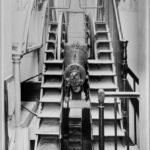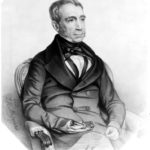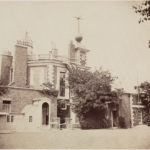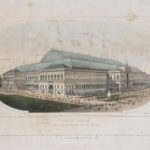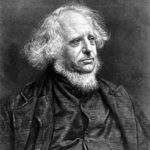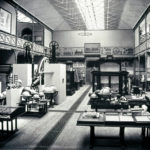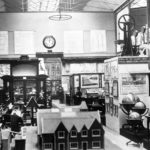A model instrument: the making and the unmaking of a model of the Airy Transit Circle
Article DOI: https://dx.doi.org/10.15180/201305
Abstract
The Airy Transit Circle defined the position of the Greenwich Prime Meridian for decades. A set of models depicting the celebrated instrument and its parts was exhibited at the Exposition Universelle held in Paris in 1855. After the exhibition, the models were transferred for display at the South Kensington Museum, where it remained until it was deaccessioned in 1928. The article investigates why the set of models were seen as ‘mysterious’ in both Paris and London, despite being the instrument that marked Longitude Zero for the British Empire, and why such a prestigious instrument failed to capture the public imagination. This is shown by highlighting the contradictory interpretations of the models by the various networks of individuals and institutions within which they were discussed and transmitted.
Keywords
Airy Transit Circle, Exposition Universelle 1855, Greenwich, History of models, Royal Observatory, Sir George Biddell Airy, South Kensington Museum
An instrument that needs introduction
https://dx.doi.org/10.15180/201305/002George Airy was the seventh Astronomer Royal at the Royal Observatory, Greenwich (ROG), from 1835 to 1881.[1] During his directorship the work of the Observatory was radically transformed by the introduction of factory production methods into astronomical labour, such as increased division of labour, setting up new regulations relating to the daily tasks of the Observatory staff, and the implementation of strict hierarchies (Smith, 1991, pp 5–20). The new routines required new instrumentation that more effectively accommodated the production of astronomical observations in large numbers and the specialised division of labour. In light of this, from 1845 onward, Airy began the re-instrumentation of the ROG. During the next fifteen years, five new major instruments were installed at the buildings: the Altazimuth, the Reflex Zenith Tube, the Airy Transit Circle, the Barrel Chronograph, and the Great Equatorial (Satterthwaite, 2001, pp 101–113). However, not all of them were used with the same regularity and success. For example, the Great Equatorial did not form part of the routine work of the Observatory, and the Reflex Zenith Tube was considered a faulty instrument. By contrast, the Altazimuth and the Transit Circle were used on a daily basis, and solidified the focus of the ROG on the field of positional astronomy for the last thirty years of Airy’s directorship.
The Transit Circle has remained in its original position ever since its installation in 1850.[2] However, when the ROG was transformed into a museum, the possibility of transferring all of the instruments from the Observatory to the Science Museum was repeatedly discussed. Ultimately, the director of the neighbouring National Maritime Museum – Frank Carr – made a successful case for gaining control over the fate of the ROG (Littlewood and Butler, 1998, pp 179–180). Carr achieved this by emphasising that the ROG was set up with the historical aim of finding ever more precise ways of determining longitude at sea. Through the ‘quest for longitude’, and through the Observatory still being funded by the Admiralty in the 1950s (until 1965), Carr was able to place the historical functions of the ROG within maritime history, thereby making the basis for connecting it to the National Maritime Museum.[3] The discussion about the fate of the instruments in the 1950s was not the first time the Science Museum and the ROG came into contact over these instruments. As the article demonstrates, the South Kensington Museum (which became the Victoria and Albert Museum in 1899, and from which the Science Museum was formed in 1909) had on display a model of the Transit Circle for over seventy years (from 1857 to 1928). The aim of this article is to reconstruct the history of the model of the Transit Circle from the workshop of the ROG, through the 1855 Exposition Universelle in Paris, to its eventual inclusion in the Educational Collection of the South Kensington Museum.
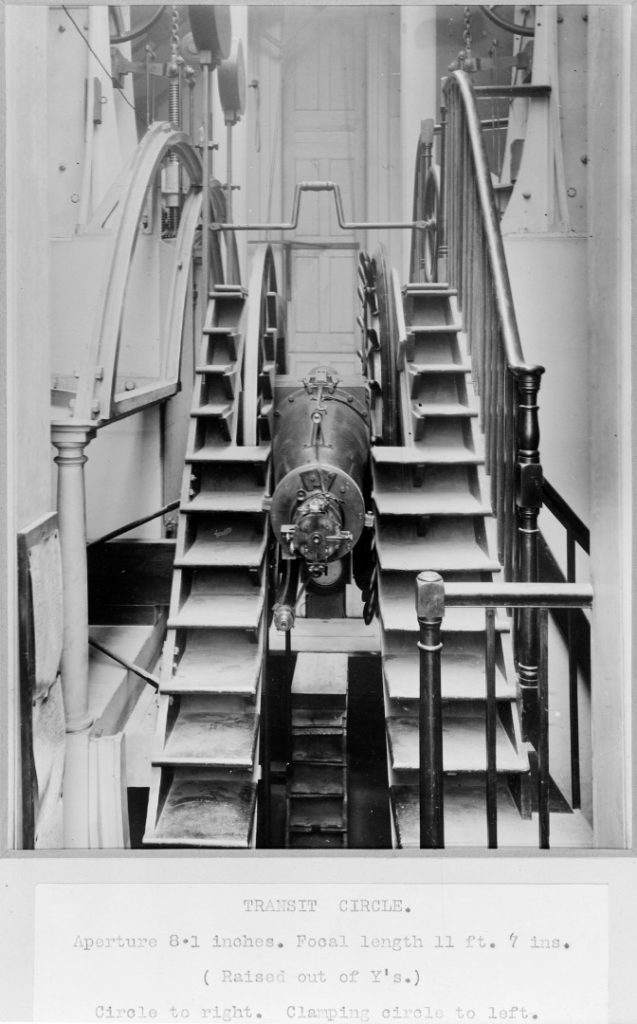
Thanks to George Airy’s meticulous insistence on preserving the documents related to the ROG, a wide-ranging correspondence survived about the first years of the model.[4] The documents give us an almost complete view of the network that contributed to its production, which included instrument makers, government officials, carpenters, banks, astronomers and commercial firms. To understand the interaction of the different entities with the model of the Transit Circle, the article’s approach is influenced by the theoretical frameworks of Actor-Network Theory and Object biographies.[5] Actor-Network Theory considers the analysis of both humans and non-human entities (collectively labelled actants) to be equally significant. Such an approach allows the research to follow non-human actants as they interact (or associate) with different networks. In the case of this article, following the model of the Transit Circle as an actant highlights the network that was set up to support the 1855 Exposition Universelle and demonstrates how different actants interacted with the model. Within Actor-Network Theory, the interpretations and meanings associated with material objects always emerge from the network within which they are embedded, as opposed to from an inherent design and essence found within their material reality. Such an approach brings forth the various meanings and associations attached to actants by the networks that they pass through. This movement of actants through networks is called the chain of translation. According to Bruno Latour, a good application of Actor-Network Theory is one that describes the movement of actants through various networks, and shows how every network alters the actants through creating different associations with them (Latour, 2005, p 129). This article highlights how different networks translated the Transit Circle’s model and how such translations shaped its materiality. In addition, the article demonstrates the various meanings attached to the model of the Transit Circle, such as an ‘instructive model’, an example to Airy’s re-instrumentation programme, a financial burden or a reputable astronomical instrument. This nano level approach reflects Actor-Network Theory’s preoccupation with defining the social as the translation processes. However, due to the overwhelming number of entities that it can incorporate into its analysis, it is difficult to define the limits of the network that still affects an entity. This can result in overestimating the influence of actants at the boundaries of networks, while at the same time underplaying the role of actants in positions of power (Feenberg, 2017, pp 643–644). The boundaries of the networks described in this article are set by the historical documents preserved among the Airy papers. By doing so, it emphasises the central role that Airy played in managing the fate of the model, and how he negotiated the embodiment of the different meanings in the final form of the model.
Object biographies offer another theoretical framework for examining the history of the model. This process is useful for the historical analysis of material objects as primary sources. The approach has been used in various fields with a focus on the materiality of objects, including archaeology, anthropology (Kopytoff, 1986; Gosden and Marshall, 1999) and museum studies (Hill, 2012). Similarly to Actor-Network Theory, it is characterised by an agreement about objects forming part of social networks. However, while early works in object biographies consider them to embody and reflect social relations (Kopytoff, 1986), later studies perceived objects as entities that actively participated in the co-production and maintenance of social relations (Gosden and Marshall, 1999). Within history of science, a similar theoretical division can be identified. At its very extremes, the approach allows historians of science to interview and talk to objects through the language of their materiality (Daston, 2004). However, it is most often used to highlight the ways in which the meanings of objects are altered in different social contexts and to follow the life of an object from its construction to its eventual destruction (Alberti, 2005). Within such an approach, alterations made to the materiality of an object become just as important as an individual making a new decision. They highlight new intentions being embedded within and mediated through the object. Therefore, object biographies demonstrate how the chain of translations in the meanings of an entity (as emphasised by Actor-Network Theory), are implemented into its material configurations. Similarly, examining the construction process highlights alternative ideas that were considered to be implemented into an object’s materiality, and reveals what intentions the final form of an object mediates to individuals who interact with it. In the case of the model of the Transit Circle, this article shows that Airy attempted to mediate an educational and instructive aim, which was repeatedly countered by different groups involved in the making of the model. In brief, combining elements from the two approaches makes it possible to analyse the competing and the superseding narratives that were ascribed to the model by different networks.[6]
This article tells the story of the model of the Transit Circle by starting out with a description of the status of the ROG around 1855, and how the Transit Circle fitted into the work of the institution. The article then shifts its attention to the 1855 Exposition Universelle in Paris, and how the British authorities decided upon exhibiting a model of the instrument there. A longer elaboration then follows, on the obstacles that both Airy and the British organisers faced during the construction and the installation of the instrument. The article then analyses the reception of the exhibited model, and its eventual return to London. Finally, the piece reflects upon how the model used to be exhibited in the South Kensington Museum, and how it was deaccessioned in 1928. By following the story of the model, the article shows the chain of translation from a model demonstrating the re-instrumentation programme through various other associations until its final form as an instructive exhibit at the South Kensington Museum. This way the article shows that the coexistence of multiple associations and the inability to ascribe a single dominant meaning into the materiality of the model led to major problems with understanding its purpose, which resulted in its destruction.
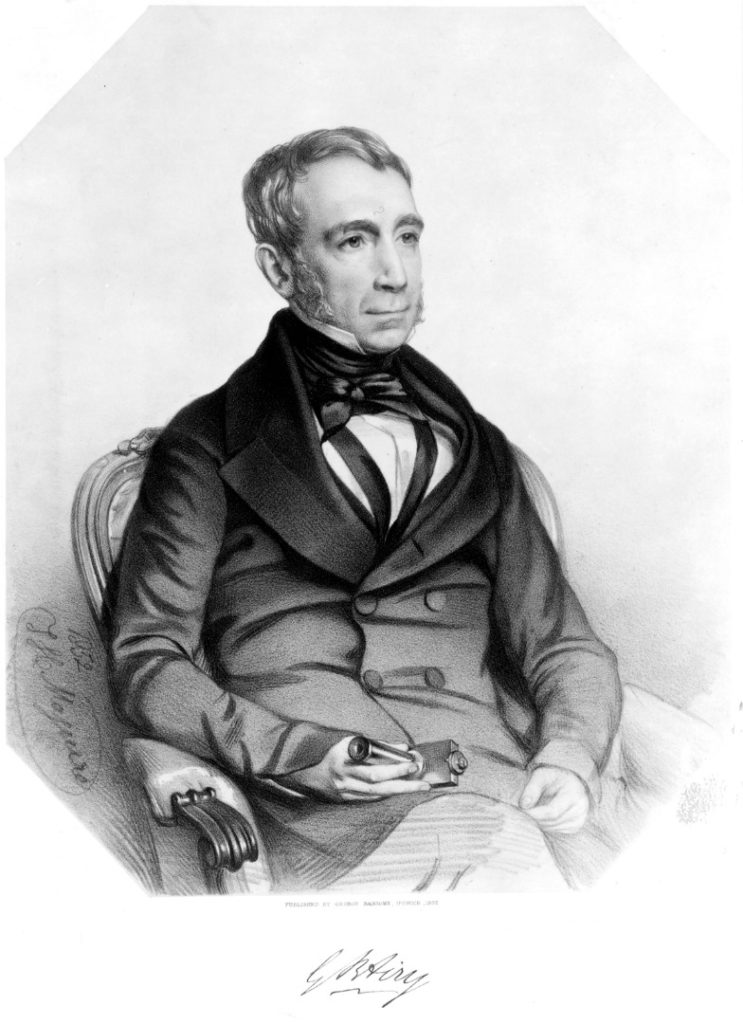
The case study also adds to the existing scholarship on Airy by demonstrating how the model illustrated the cooperation between ‘science as well as Industrial Art’, thereby becoming a symbol for Airy’s transformation of the ROG into a ‘factory’.[7] Through an analysis of Airy’s communications with the members of the networks involved in the production of the model, the article shows how he controlled the representation and display of the instrument to both general and specialist audiences. This way, Airy’s control is not limited to the internal business of the Observatory. Instead, it encompasses the management of the public image of the ROG (and its instruments). By doing so, this article also shows how the Transit Circle had already enjoyed an international reputation before being recommended as the instrument to define the Prime Meridian at the 1884 International Meridian Conference. Such a consideration opens up the necessity for the scholarship to consider the contribution of the instrument to astronomy and navigation between 1850 and 1884, in order to demonstrate how it achieved the reputation of a reliable instrument. Finally, the article highlights how even nineteenth-century astronomers using the instrument on a daily basis struggled to communicate it to a general audience. Therefore, the problem of displaying the Transit Circle to visitors today is taken away from the problem of being an ‘outdated’ instrument, into a new framing where its display already presupposes prior knowledge about the uses of the instrument.
The first transit circle at the Royal Observatory, Greenwich
https://dx.doi.org/10.15180/201305/003The late 1840s and the early 1850s were years of expansion for the Royal Observatory at Greenwich. The recently established Magnetic and Meteorological Department gradually became more and more active in the daily tasks of the ROG (Macdonald, 2018). The advent of telegraphic communication engulfed astronomical research too, and Airy commenced the determination of longitude between the ROG and other (both British and non-British) observatories via telegraph during the early 1850s (Kershaw, 2014). The Astronomer Royal also implemented a new sympathetic clock system with the aid of clockmakers and industrialists (Bennett, 1980; Chaldecott, 1986). This timekeeping system used in conjunction with the astronomical instruments served as the basis for both the determination and the telegraphic distribution of time across England (Rooney and Nye, 2009). The same period saw the reconstruction of the Palace of Westminster, in which Airy was assisting with the construction of the bell tower. His ideas put forward during the project foreshadowed the role of the ROG in the future dissemination of time around Britain (Morus, 2000; Gillin, 2017). The controversy around the discovery of Neptune in 1846 brought Airy into the middle of the debates, as he was blamed for not regarding John Couch Adams’ calculations at the time with the importance they deserved. However, as other historians of science have shown since, a breakdown in communications between the two astronomers played a crucial role in not pursuing the search for the planet further (Chapman, 1988; Smith, 1989; Kollerstrom, 2006). After the Great Exhibition of 1851, the Astronomer Royal and his close friend, Richard Sheepshanks, continued to receive criticism from Charles Babbage and Sir James South in consequence of their legal battle in the 1830s over a telescope built for South by Troughton & Simms (Hoskin, 1989). Furthermore, Babbage brought up new claims against Airy for halting government funding for his first Difference Engine (Swade, 2003). It is within these turbulent times that the construction of a new transit circle was proposed to the Board of Visitors of the Observatory in 1847.
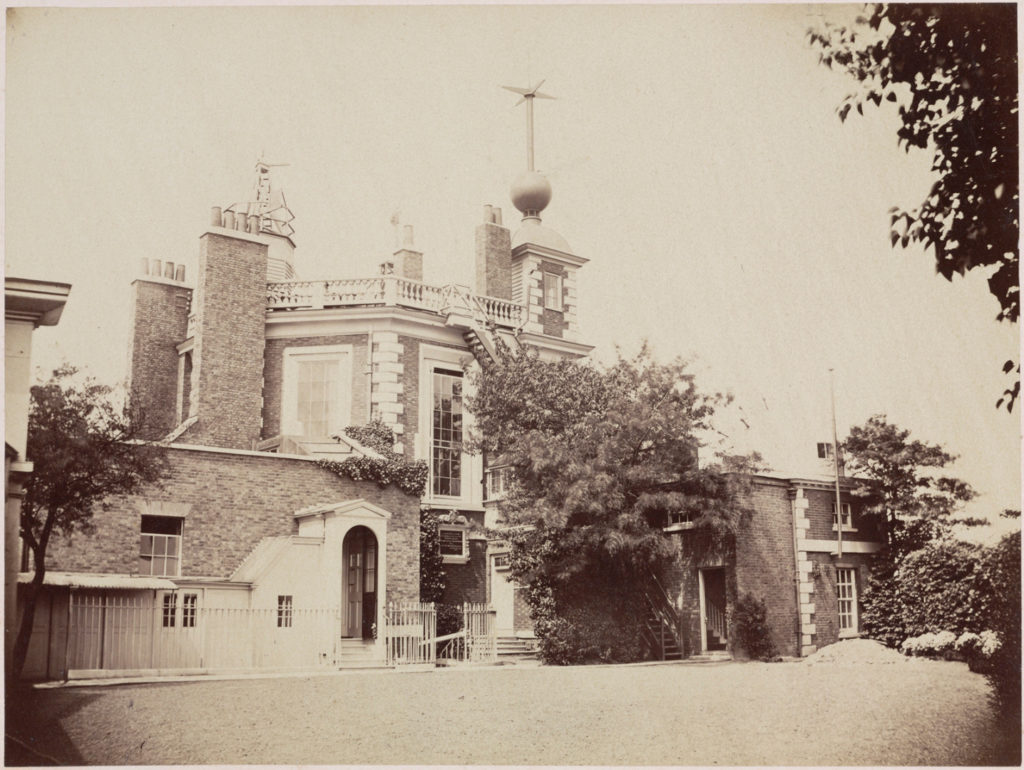
The Airy Transit Circle was installed at the Royal Observatory, Greenwich in 1850, with the first observations commencing on the first days of 1851. It formed part of the re-instrumentation project of the Astronomer Royal, George Airy.[8] It took over the role of previous meridian instruments (the Troughton Transit Instrument, and both the Jones and Troughton mural circles), and combined their functions.[9] By belonging to the family of these meridian instruments, the Transit Circle directly contributed to the historical aim of the ROG (i.e. positional astronomy in support of navigation) and became the Observatory’s main astronomical instrument. Observations with it not only served as the basis for Greenwich Time, but eventually also defined the Prime Meridian.[10] After 1884, it supported the work of the Carte du Ciel project by providing essential reference data for photographic observations.[11] By the mid-1920s systematic errors were detected in its design, which led the ROG to consider the construction of a new transit circle (Gething, 1954). The use of the instrument was first brought to an end in 1940. However, due to the destruction of the Pulkovo Observatory, the Transit Circle was brought back to operation in 1942 in order to make occasional fundamental observations. Such a reduced programme continued until 30 March 1954, when the final observation with the instrument was made.
At the time of its installation, it was praised for the technical advances it introduced to astronomical instruments. A new method of chilled iron technique was used for the casting of the body of the instrument.[12] The graduated circle showing angular measurements of the celestial body was created by William Simms’s dividing engine and attained higher precisions than ever before (Chapman, 1995, pp 121–137). It introduced a new system for illuminating the field of view and the wires in the eyepiece (Glaisher, 1852, p 248). Finally, it carried an 8-inch object glass that made it the transit circle with the largest optical power at the time.[13] By bringing together the skills of scientific instrument makers and mechanical engineers, Airy created an instrument that embodied the factory production mentality maintained by him within the ROG. Since it combined the functions of two separate instruments, it fitted into Airy’s larger transformation of the ROG by reducing the time and personnel necessary for making many of the observations with it. The control and surveillance of the members of staff was expanded to the instruments themselves too. Through the constant re-determinations of the errors of the instrument, and through the measurements of the personal equations of the observers using it, the personalities of both the instrument and its users were placed under surveillance (Schaffer, 1988). Finally, the continued use of the standardised forms assisted Airy in the simplification of the calculations and the ordering of large scale data gathered about the celestial bodies. By embodying the arts of science and industry, the Transit Circle seemed to be a perfect fit for the French universal exhibition of 1855.
Winking at the time
https://dx.doi.org/10.15180/201305/004The Exposition Universelle of 1855 in Paris was considered to be both a response to the Great Exhibition of 1851, and a ‘peace-making mechanism’ during the Crimean War (Murphy, 2010, p 32). It was also the first universal exhibition to bring together both fine and industrial arts (Mainardi, 1987, pp 39–42). On the British side of the exhibitors, the Board of Trade asked the Royal Society to set up a committee to overlook the selection of industrial and scientific instruments to be exhibited in Paris.[14] Airy was a member of this committee, and he was assigned the role of contacting instrument makers about whether they were interested in exhibiting in Paris. Unfortunately, almost every instrument maker he contacted declined on the basis of being too busy with orders from clients. Airy’s role also included recommending items to be exhibited. He initially suggested exhibiting in Paris models of the instruments recently constructed for the ROG: the Altazimuth, the Transit Circle, the Reflex Zenith Tube, and the Barrel Chronograph.[15] Since funding for such proposals was limited, the Commission responded by narrowing down Airy’s recommendation to the Transit Circle only. Furthermore, it was decided that instead of displaying a single model of the instrument, it will be exhibited through a separate set of models. These decisions were mainly based on the limited available exhibition space (which made exhibiting several large-scale models of instruments an unviable option) and on the limited funding available from the Board. Reflective of these considerations, the Board of Trade requested Airy to provide details on the space that the set of models would take up as well as an estimate of the associated costs. Airy in his responses repeatedly emphasised the difficulty in accurately estimating the costs and found it difficult to convince the Board of Trade of the need for a large space for the models.[16] Furthermore, the original instrument makers declined to undertake the construction of the models on the grounds of being too busy with other orders. Due to such obstacles and the time constraints, Airy decided to withdraw his application for the exhibition.[17]
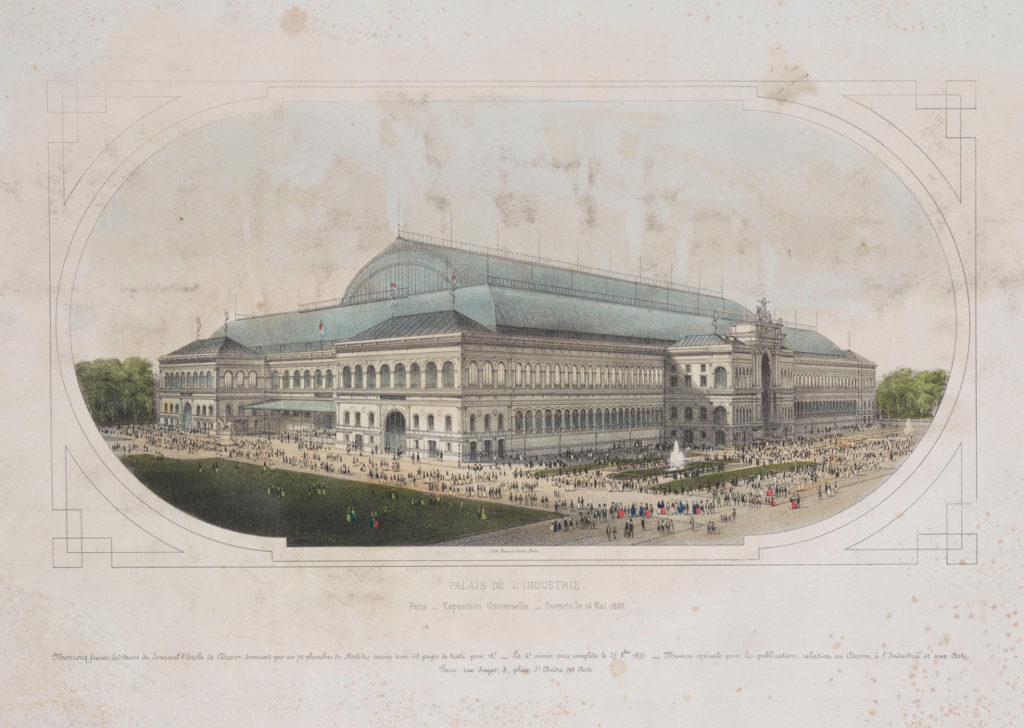
Even though the set of models was not yet in existence, the different actors of the network already interpreted it in several different ways. Airy’s initial aim was to exhibit a model of the Transit Circle alongside models of other instruments that formed part of his re-instrumentation programme. This manifested his intention to display the major changes that he had been implementing into the ROG, and his approach to the instruments forming an assemblage that contributed to the operations of the ROG, as opposed to being isolated instruments. By contrast, the Board of Trade approached the set of models as a financial expenditure, thereby shaping the extent to which Airy was able to execute his vision. Finally, the instrument makers interpreted the model as an unnecessary diversion from their more profitable orders. These different approaches to the model highlight how the networks already shaped its final form at the stage of negotiations by imposing financial, spatial and material limitations.
Airy’s withdrawal prompted the Board of Trade to give in to the Astronomer Royal’s demands, and shortly after work began on a set of models that showcased the Transit Circle and its parts.[18] Airy’s change of heart was partly induced by his friend, Admiral William Henry Smyth, who asked him not to withdraw from exhibiting in Paris. Airy simply responded by stating that ‘winking at the time, some difficulties might be overcome’.[19] Further complications arose shortly after the suggestion of the committee to exhibit the ‘ancient instruments’ of the ROG too, in order to demonstrate the progress of meridian instruments at the Observatory over time.[20] By proposing to exhibit the previous meridian instruments of the ROG, the committee attempted to display the connection between the historical aim of the Observatory and the institution’s excellence in the instrumentation used in line with that aim. Airy once again had to challenge the proposals about the exhibition, by arguing that he could not guarantee the safety of the instruments.[21] In the end, he managed to convince the committee and was able to refocus his energies on the making of the models.
Making models, lacing longitudes
https://dx.doi.org/10.15180/201305/005The nearing of the opening of the exhibition meant that the construction of the models had to be rushed. In addition, the original makers of the instrument (Ransomes & May and Troughton & Simms) participated only by providing drawings and plans of the instruments as they were busy with focusing on other orders.[22] Airy’s plan was to create a display consisting of nine models of the same instrument in total: one half-sized model of the entire Transit Circle (with an excavated pit for turning the telescope tube); the original small model used during the construction of the instrument (which was in the possession of the Royal Astronomical Society); two half-section models of the Transit Circle; three replicas of collimators used with the Transit Circle; a small model of the lifting apparatus on top of the Transit Circle’s piers; and a half-sized model of the counterweights for the mercury trough.[23] The list of models showed that Airy did not want to present models that mirrored the operations carried out with the Transit Circle. Instead, he focused on displaying the assemblage of mechanical and optical parts contributing to its operation. By doing so, the models were visual manifestations of the technical description of the instrument (which description was chained to some of the models during the exhibition). In addition, the list of models displayed tells us that Airy changed his initial plan of exhibiting examples of the re-instrumentation of the Observatory. Instead, he wanted to create an instructive set of models that was going to serve as the visual description of the Transit Circle.
Based on Airy’s plans, the set of models exhibited three different approaches to the term ‘model’, each based on the historical network from which the actual model emerged (Chadarevian and Hopwood, 2004). First, the main large model of the instrument was intended to show the Transit Circle in its actual size and to provide an impression of the totality of the instrument. This was visible through the non-working/non-operational state of the model. The lack of a functioning state made it clear that it was a display of the design of the instrument as opposed to an exact replica. Second, the sectional models were used to demonstrate both the arrangements of the internal parts of the Transit Circle and displaying the rigidity attainable through using the chilled iron technique.
Demonstrations of internal arrangements turned the model into a three-dimensional illustration of Airy’s description of the instrument (i.e. an explanatory model), while at the same time it also provided a sample of the material used for the construction. This interpretation of the instrument had appeared in the past through displaying samples in the form of sectional models at the Meetings of the British Association for the Advancement of Science in 1850 and 1851. The third and final approach to the model was manifested through a small complete model of the Transit Circle (in possession of the Royal Astronomical Society), which had already been in existence since the construction on the original instrument in 1848. It was made in order to convince the Board of Visitors about the final design features and the viability of the project.[24] It also served the role of a small-scale instructive model that enabled Airy and the instrument makers to discuss and illustrate their ideas through a three-dimensional medium. In brief, the set of models of the Transit Circle exhibited multiple definitions of a model as opposed to following one strict definition of it. As we will see in the following sections, this mixture of models designed with different aims contributed to the difficulties in understanding the set and the relations of its parts to each other.
Initially, Airy personally oversaw the making of the models, but by the end of March he assigned responsibility to one of his assistants, Edwin Dunkin.[25] Dunkin possessed a detailed knowledge of the Transit Circle as he was the person in charge of determining and calculating its errors (Airy, 1857, p ii). In relation to the construction of the models, his main tasks included overseeing their completion and arranging the logistics behind shipping them to Paris. Furthermore, Dunkin, John Green (the carpenter of the Observatory) and a few labourers were assigned to travel to Paris to set up the instrument. As a result, it is through Dunkin’s letters to Airy that we can get a glimpse into the chaos that ruled over the organisation of the Exhibition. Dunkin’s first letter from Paris complained about the shipping packages being distributed without any order, and that the allocated space for the models was not yet finalised.[26] His second letter mentioned that a space for the models was finally allocated, but it was not according to the original plan that would have placed the main model along the meridian.[27] The next letter recounted the story of the organisers objecting to excavating the ground for the pit of the main model, which led to further delays.[28] Problems continued to mount as the opening of the exhibition approached. The excavation of the pit was not yet ready, and no help was provided by the organisers to carry out the digging. Furthermore, the organisers also objected to setting up the smaller models.[29] Airy became increasingly alarmed by these developments as he considered the smaller models to be ‘more instructive than the great one’.[30]
A few days before the opening the organisers once again objected to the position of the smaller models, and threatened to separate them from the large one by placing them in a different hall.[31] Unfortunately, none of the surviving letters describe what the exact objections of the organisers were. However, both Airy and Dunkin wrote to Captain Francis Fowke (one of the heads of the organising committee) to stress the importance of the models as a set.[32] Fortunately, the British authorities responded quickly and managed to keep almost all the models together, except for three smaller models (the two half sections, and the original small model owned by the Royal Astronomical Society).[33] However, this was exactly what Airy and Dunkin wanted to avoid because the set highlighted the assemblage of the Transit Circle as an instrument consisting of several spatially separate elements, and because the different models communicated different aspects of the instrument (e.g. technical details, instructive description, and an example of its totality). For historians of science and scientific instruments, it also provides the important insight that Airy thought about the instrument as an assemblage of multiple parts. Therefore, histories of scientific instruments like the Transit Circle can be expanded with examinations of how the different parts of their assemblages were interlinked, and how modifications made to one part of an assemblage affected the operation of the other parts. For instance, in the case of the Transit Circle, without the use of the collimating telescopes, the instrumental errors were not possible to be determined. Without the measurement of instrumental errors, the observed positions of the stars could not be calculated with the high level of reliability expected from the ROG. By considering the Transit Circle as an assemblage of spatially separate but operationally interconnected parts also opens up the question of how it interacted with other instruments within the ROG. Although such a question was hinted at through the suggestion of exhibiting the Transit Circle with previous meridian instruments (connecting present and past instruments), and Airy’s original suggestion was also to exhibit all four of the new instruments, the final display did not pose the question to the visitors of the exhibition.
While John Green and the workmen left Paris before the opening of the exhibition, Dunkin stayed behind to look after the models for a couple more days and to finalise the displays (e.g. by attaching descriptions of the instrument to the models).[34] After the opening of the exhibition, the models received mixed responses from the press, most of which focused on its unusual design. The Illustrated London News referred to it as ‘the mysterious transit circle from Greenwich’.[35] The same article noted that a French writer described it as a ‘model of the Greenwich Observatory’ as opposed to one of its instruments.[36] The inability to comprehend the displayed model was highlighted by the Board of Trade too. Playfair requested Airy to place a ‘popular description’ on the display as the French visitors thought it was a steam gun and repeatedly asked to see it in action.[37] The inability to categorise the instrument was also reflected in the reports of provincial newspapers that labelled it an ‘architectural sculpture’.[38] The press picked up on the chaotic organisation of the event too (as emphasised by Dunkin), and used the set of models as an example to criticise the inability of the British government to arrange the smooth preparations for the Exhibition.[39] Despite this, Charles Piazzi Smyth (son of Admiral William Henry Smyth), who attended the exhibition, praised the display. He reminded Airy of the distinguished location of the models in the exhibition hall, and that even the fiercest looking workers stopped to admire them.[40] In relation to presentations on site, and for special occasions, Airy asked a favour from Le Verrier, to assign one of his assistants to explain the instruments for important visitors.[41]
From Greenwich to Paris, and then to London
https://dx.doi.org/10.15180/201305/006The fate of the model after the exhibition was not clarified between Airy and the Board of Trade when it was commissioned. The Board of Trade assumed that since it was the body paying for the construction of the models, the items were going to remain the Board’s property after the exhibition. However, this was not made explicit during its commissioning, which misled Airy into believing that he had full authority over the fate of the models. In light of this, once Dunkin began the installation of the models in Paris, Airy instructed his assistant to ask around whether ‘Le Verrier or any body else’ wanted to keep the models.[42] None of the Parisian institutions showed any interest initially, though Le Verrier agreed to keep an eye on the model during the event.[43] Discussions about the fate of the model resurfaced only at the end of the exhibition when the models had to be removed. Airy sent two members of the ROG staff (John Green and Alexis Albert de Lajugie) to Paris to remove the models. Lajugie was given further specific instructions to speak first to Le Verrier and then to Jean-Baptiste Biot as to whether either of them wanted to have the models. Upon the arrival of Green and Lajugie, they found the models disassembled and ready to be sent back to England. They were informed that the president of the Board of Trade gave instructions for the removal of the display.[44] If Airy wanted to leave the models in Paris, he now had to convince Lyon Playfair (commissioner of the Exposition Universelle) and Henry Cole (also a commissioner of the Exposition Universelle, and the first director of the South Kensington Museum). Meanwhile, Biot told Lajugie that he did not want the models, and because Le Verrier was not found by Lajugie, Airy was still waiting for his response. In light of this, Airy told the Board of Trade that he had already offered the models to the Observatoire de Paris.[45] The Board of Trade now faced a tricky situation: the models had already been returned to London, but the offer to a prestigious institution like the Observatoire de Paris could not be withdrawn. Cole’s proposed solution to this matter was to make Le Verrier pay for the shipping of the models from London back to Paris.[46] Airy’s response was a complete rejection of this idea, and he subsequently withdrew his offer to Le Verrier.[47]
The possibility to gift the models to scientific institutions in Paris represented a fourth meaning in which the models were interpreted. The previous meanings framed the models as explanatory models (Airy’s interpretation), displays of reputation (Board of Trade’s interpretation), and displays of historical continuity (Royal Society). The proposal to leave the models in France as gifts framed the models as artefacts that disseminated technological knowledge to other scientific communities. By doing so, the emphasis of the models was shifted away from the large main model to the smaller models which provided technical insights into the instrument’s design.
The models remained in the possession of the Board of Trade for a while, except for the small original model, which was returned to the Royal Astronomical Society.[48] With the future site for the models being undecided, Airy received at least one request for their display. E J Loseby asked Airy if the models of the Transit Circle could be transferred to the Royal Polytechnic Institution.[49] However, Loseby’s question arrived at a time when Airy was still entertaining the possibility of gifting the models to the Observatoire de Paris, which led the Astronomer Royal to reject Loseby’s offer.[50] The possibility of exhibiting the models at the Royal Polytechnic Institution also signalled a misreading of the display in Paris. The Polytechnic specialised in the exhibition of ‘interactive’ and useable artefacts/machines, but the models of the Transit Circle offered none of that. However, it raised the potential for further modifications of the models in order to fit such aims of the Institution. Within such a context, the models would have been interpreted in a new way, whereby they offered a functioning display of the instrument.
After the enquiry from the Polytechnic, records relating to the small models disappeared. However, a year and a half later, parts of the set of models found a new location: the large model and the collimating telescopes were given to the South Kensington Museum. While the letters relating to this transaction do not survive within the Airy papers, later correspondence between Airy and the Museum did survive. Henry Cole, who became the director of the Museum, asked Airy to write a description of the instrument for the visitors.[51] Since the Astronomer Royal was busy at the time, he assigned the task to Robert Main (Chief Assistant of the ROG). Main had previously written an account of the instrument, and therefore had experience in communicating technical details to general audiences.[52] Despite this, when Main handed his new description to Airy, the Astronomer Royal found it unsuitable for a general audience because it focused too much on the technical details. As a result, Airy decided to write his own description that shifted the focus away from the technical details of the instrument towards how positions of celestial bodies were determined using transit circles. In addition, he took the opportunity to highlight what made the Transit Circle different from similar instruments:
The chief merit of this Greenwich Transit Circle is, that it is able to carry an object glass of larger diameter than has hitherto been mounted on meridional instruments, and that it gives great facility for examination of its defects and its errors of position. In its optical power, its accuracy, and its convenience for observations it has no equal in Europe.[53]
In order to provide the technical details of the Transit Circle to inquisitive minds, this description was accompanied by the official description of the instrument, which was published three years earlier as an appendix to the Greenwich Observations. The differences between Main’s and Airy’s descriptions of the instrument also highlight two approaches to the model and its display. Main considered the main audience to be interested in the technical details of the instrument, thereby maintaining the interpretation of the model as a tool for the dissemination of technical knowledge. By contrast, the Astronomer Royal’s description offered an educational account to visitors on how it contributed to positional astronomy. In this light, the model was re-interpreted within the aim of the Educational Collection of the South Kensington Museum, by providing an instructive description of the type of instrument that the model represented. While there remains no definitive letter that confirms when the models were finally set up, one of Airy’s notes to John Green (who assisted in both the construction of the model and at the Paris exhibition) still survives, in which the astronomer requests the carpenter to help in the installation of the models at the Museum.[54]
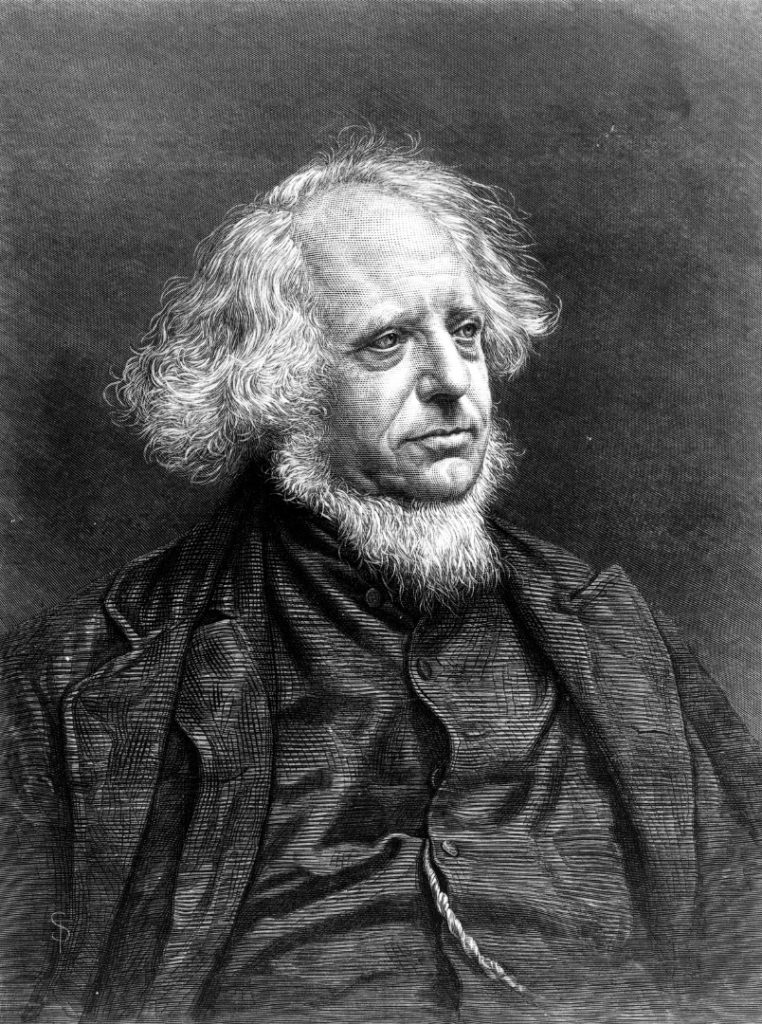
The large model and the other items surrounding it survived on photographs taken around the same time as the opening of the Museum. The first one (Figure 6) shows the model installed in the Educational Section of the site, with one of the models of the collimators set up at the southern end of the telescope.[55] A second collimator is also visible next to the western pier. In its original state, this collimator would have been placed in a smaller hole cut into the western wall of the Transit Circle Room. The extent to which these collimators were not considered as significant as other parts of the display by the Museum was signalled by the placement of one of the globes on the pier holding the southern collimator. Among the other items on display, the observation pit can be seen excavated between the piers. The inseparability of the instrument and the pit (both at the Paris exhibition and at the South Kensington Museum) demonstrated how the space engulfing the Transit Circle formed part of the instrument just as much as the additional instruments set up around it. The photograph served as the basis for an illustration that appeared in the Illustrated London News reporting on the opening of the Museum.[56] The only major difference between the original photograph and the illustration was the artist’s inclusion of people in the image. Unfortunately, none of the visitors were depicted as observing the displayed model. While these two images showed the instrument in a pre-exhibition state, a later photograph from around 1859 (Figure 7) showed the instrument in a more complex environment. Taken from the northern side of the model, it showed the maps that were placed on the side of the eastern pier, as well as the label for the display: ‘Model of the Transit Circle – Royal Observatory Greenwich’. The placement of the model between the globes and the maps further exemplified the close connection that the instrument maintained between astronomy, geography and navigation.


The model remained part of the South Kensington Museum as well as that of the Educational Collection. A brief description quoting Airy’s lengthier submitted text accompanied the catalogue entry.[57] Reference was also made to it in the catalogue of the Special Loan Exhibition of 1876 as an item exhibited in the Astronomy and Meteorology section (1877, p 395). The last entry about the instrument appeared in the 1895 Physiography Catalogue of the Museum. As opposed to calling it a transit circle, the entry labelled it a ‘Transit Instrument’. This identification is surprising since the very first sentence of the entry denotes that the ‘Greenwich instrument’ is more than just a transit instrument, since it is combined with a design of a mural circle too.[58] As can be inferred from this, the catalogue moved away from Airy’s description of the instrument (which targeted a general audience) and used a description similar to that of Robert Main’s technical explanation. The technical file of the instrument further specifies that in 1914 repairs were made to the model. However, the repairs did not extend the life of the model much longer, as it was deaccessioned in 1928.
The various sites where the models were exhibited reflect the flexibility with which the Transit Circle was given new interpretation and meaning. Airy’s original intentions to have explanatory models surrounding a large model of the instrument was shaped by the exhibition organisers in Paris with the removal of the smaller models. It demonstrated that the Exposition Universelle intended to display replicas (both operational and non-operational) as opposed to instructive models. This way, it connected arts and science under a single exposition. By contrast, Airy’s aim to gift the models to either the Observatoire de Paris or the Bureau des longitudes would have preserved their role as an explanatory model. As gifts of explanatory models to another observatory, they would have served as examples for disseminating technical knowledge through models prior to the purchase of new instruments (Bonifacio, Malaquías and Fernandes, 2009). By ultimately displaying the model within the Educational Collection of the South Kensington Museum, Airy was able to retain his original intention of creating an explanatory exhibit. However, it was the large model that had to fulfil this role, which was otherwise considered by Airy the least useful for this aim. Finally, the request from the Royal Polytechnic Institution provided a completely different interpretation of the model. As Morus (1999, p 80) argued, the Polytechnic focused on the exhibition of operational displays, which was a feature lacking in the models of the Transit Circle. However, the acquisition of the models by the Polytechnic could have led to their transformation into such instruments. In addition, the Polytechnic contributed to the education of the public on factory production systems (Lightman, 2007, p 116). Given that the ROG has been interpreted as a factory of astronomical labour, the inclusion of the models of the Transit Circle would have fostered such an understanding of the tasks of the Observatory among its contemporaries. In relation to the factory systems, most of the exhibited items at the Polytechnic were representative of manufacturing and industry as opposed to science. Placing the models of the Transit Circle within such a context would have emphasised its industrial links to Ransome & May as opposed to the ‘practical’ application of the instrument to navigation (as it did at the South Kensington Museum).
Conclusion
https://dx.doi.org/10.15180/201305/007While the original Airy Transit Circle remains in the same position today where it was installed in 1850, the model of the instrument was deaccessioned from the Science Museum in 1928. It remains unknown why the model of the instrument was no longer required, especially after countries around the world gradually moved towards adopting the longitude determined by the Transit Circle as the Prime Meridian of the World. Nevertheless, Airy’s efforts to archive the correspondence of the ROG left to future generations of historians an abundant bundle of manuscripts related to the making of the model. The surviving documents show the complex network of individuals and institutions that took part in the production and handling of the model, which allowed this article to demonstrate how the network shaped both the fate and the materiality of the final product. Its construction and display were not matters involving exclusively Airy and the organisers of the Exposition Universelle of 1855. Instead, the process involved decisions made by the Board of Trade, the Royal Society, instrument makers, and even the staff of the Observatory. However, within the move to expand the network, Airy’s contribution to the project should not be lost or underestimated. As this article showed, the models embodied his specific preference towards communicating the Transit Circle, by highlighting the technical advancements implemented into its design. The same designs showcased the role of the Transit Circle in the transformation of the astronomical labour at the ROG into techniques that resembled factory production methods. Interlinking industry and science this way made the Transit Circle a prime example of the combined efforts of science and industrial arts, i.e. the type of instruments that the British Board of Trade intended to display at the Exposition Universelle in Paris.
By expanding the network of individuals involved, this article also showed that the model displayed at the South Kensington Museum was originally part of a set of models showcasing the different parts of the Transit Circle. This was an important finding in relation to understanding why the reception of the model seemed to be that of confusion as opposed to clarification. Airy repeatedly emphasised in his letters that the smaller models were closer to his heart since they demonstrated the technical details of the Transit Circle better than the main large model. Despite this, Airy’s attempt to communicate the models as a set failed since the organisers relocated the explanatory models, and visitors found it challenging to interpret the unusual design. The contrast between the expectations served as a great example to illuminate the varying definitions that the concept of the model can take. In the case of the models of the Transit Circle, Airy’s definition – as three-dimensional illustrations of the technical descriptions of the instrument – did not match that of the general visitors, who expected to see an operational replica of an original artefact.
Understanding the large model as part of a set of models helps historians understand how Airy viewed the Transit Circle. It was thought of as an assemblage of multiple instruments. This assemblage encompassed both the internal parts (made visible by the sectional models), and the spatially separate parts (e.g. the collimators) that were exhibited alongside the instrument. For Airy, the displays presented his own technical vision of the instrument, which helped in the dissemination of technical information about the Transit Circle. This approach explains why he intended to leave the models with either the Observatoire de Paris or with the Bureau des longitudes. Furthermore, the initial (but later abandoned) suggestions to display models of the various instruments used at Observatory alongside the Transit Circle, highlighted that the Transit Circle itself formed part of an assemblage of instruments that was the basis for the work of the ROG. This abandoned suggestion showed us that Airy considered the initial aim of the display to be a celebration of his transformation of the ROG with new instruments, rather than a straightforward dissemination of technical knowledge through explanatory models. This way of thinking emphasises the need to include in the history of a scientific instrument how it interacted with other instruments surrounding it. Finally, the rejected proposal of the Royal Society wanted to impose a third interpretation of the model of the Transit Circle. Rather than focusing on the contemporary instrumentation of the ROG, the Royal Society wanted to display it alongside the previous meridian instruments of the Observatory that were no longer in use. By doing so, they would have emphasised how the Observatory had been continuing its original focus on positional astronomy supporting the determination of longitude at sea. This decision would have placed the Transit Circle in a historical lineage of instruments that have contributed to the same aim. Examining these three different meanings of the models of the Transit Circle showed that the instrument was always understood in relation to other instruments and not as one isolated from other instruments of the Observatory. As shown by the different proposals for displaying it, placing the model of the Transit Circle within a different assemblage of instruments would have modified the intended meaning of the display at the Exposition Universelle of 1855.
Acknowledgments
I am thankful for the helpful advice from my supervisors Dr Rebekah Higgitt and Dr Charlotte Sleigh. The Wunderkammer Reading Group of the University of Kent also generously offered to share their thoughts on a draft version of the article. Finally, I am thankful for the comments on the paper received at the 2018 British Society for the History of Science Postgraduate Conference.
Tags
Footnotes
Back to text
Back to text
Back to text
Back to text
Back to text
Back to text
Back to text
Back to text
Back to text
Back to text
Back to text
Back to text
Back to text
Back to text
Back to text
Back to text
Back to text
Back to text
Back to text
Back to text
Back to text
Back to text
Back to text
Back to text
Back to text
Back to text
Back to text
Back to text
Back to text
Back to text
Back to text
Back to text
Back to text
Back to text
Back to text
Back to text
Back to text
Back to text
Back to text
Back to text
Back to text
Back to text
Back to text
Back to text
Back to text
Back to text
Back to text
Back to text
Back to text
Back to text
Back to text
Back to text
Back to text
Back to text
Back to text
Back to text
Back to text
Back to text


